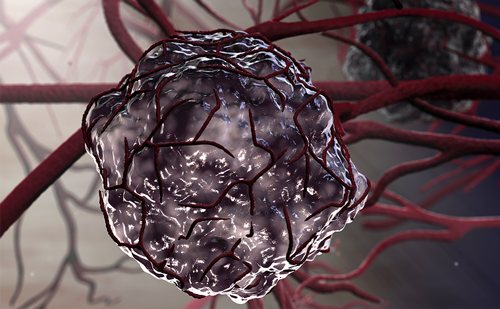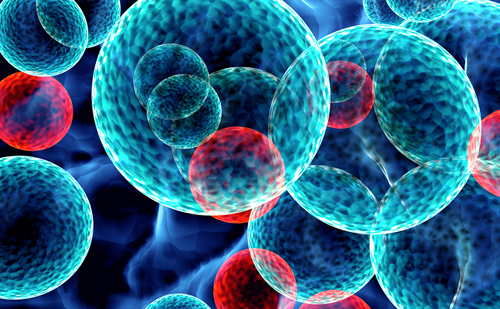Hepatocellular carcinoma (HCC) is a leading cause of cancer-related death, with a rising global incidence.1 The majority of HCC occurs in the setting of liver cirrhosis, mainly due to hepatitis C virus (HCV) infection, hepatitis B viral infection, alcohol consumption, or nonalcoholic fatty liver disease.
The most important development in HCC is the advent of novel curative therapies for HCV. Treatment for HCV infection early in the disease process includes a more than 70 % reduction in the risk for HCC.2 Earlier therapy consisted of the poorly tolerated injectable interferon (IFN), with low efficacy and a high toxicity profile. Recent advances in the treatment of chronic hepatitis C have been achieved through the development of direct-acting antiviral agents that target the nonstructural protein NS3/4A serine protease, which processes the nascent viral poly-protein, allowing for HCV replication.3 Next-generation HCV NS3/4A protease inhibitors inhibit the NS5A replication scaffold, also known as the membranous web, and the NS5B ribonucleic acid (RNA)-dependent RNA polymerase. Among several clinical trials, more than 90 % of patients achieved sustained viral response (SVR) with sofosbuvir,4,5 simeprevir,6 or ledipasvir.7 High efficacy was shown among all subgroups, except for genotypes 1 and 4. While still unclear, the curative effect of these new therapies will probably affect the incidence of HCC.
Management of HCC remains a multidisciplinary approach, especially in the presence of curative treatments in early stage. Screening, risk stratification, and management of liver decompensation are crucial in patient care. Surgery, liver transplant, and radiofrequency ablation remain the standard of care for the curative treatment of early-stage HCC.8
Transarterial chemoembolization (TACE) is the most widely used modality for nonresectable tumors.9 Recently, transarterial embolization (TAE) has shown similar outcome and safety profiles,10 questioning the role of adding doxorubicin. Radioembolization with Y90 is challenging the current paradigm of HCC treatment, despite the lack of any randomized clinical trial data to date.11 Enhancing the treatment effect of antiangiogenic therapy by preventing the angiogenic flare of sorafenib has failed so far.12,13
The advent of sorafenib as a standard of care with an improvement in survival to 10.7 months compared with 7.9 months for placebo (0.69; 95 % confidence interval [CI] 0.55–0.87; p=0.001) opened the door into ample opportunities for the evaluation of other therapeutic options.14 A randomized phase II study of sorafenib plus doxorubicin in firstline treatment of HCC showed improvement in overall survival (OS) of 13.7 months compared with 6.5 months for doxorubicin plus placebo (p=0.0049).15 A large randomized phase III trial followed that.16 However, the study was halted in view of an interim analysis that showed that “it is very unlikely that significant differences in overall survival and progression-free survival will be shown between the treatment arms”,5 based on CALGB 80802 communication.
With overexpression of c-met and its ligand hepatocyte growth factor (HGF) occurring in up to 80 % of HCC, the study of c-met inhibitors is of interest. Tivantinib, a c-met multityrosine kinase inhibitor, was evaluated in patients with advanced HCC in the second-line setting, with doubling of median OS to 7.2 months compared with 3.8 months for placebo, among high c-met expressing tumors.17 Similarly, another c-met multityrosine kinase inhibitor, cabozantinib,18 showed a preliminary improvement in survival up to 15 months in the second-line setting.19 Both drugs are under evaluation in randomized phase III clinical trials against placebo in the second-line setting (www.clinicalTrials. gov identifier: NCT01755767 and NCT01908426).20
Immune escapes have been identifıed to carry a poor outcome with a high likelihood of metastatic spread of HCC and present a novel therapeutic opportunity. Anti-CTLA4 tremelimumab has demonstrated antitumor activity in patients with heavily pretreated unresectable and metastatic HCV-related HCC, and induced a significant decrease in viral load.21 Similarly, MEDI4736, a human immunoglobulin monoclonal antibody programmed death-ligand 1 (PD-L1) inhibitor,22,23 with a median followup of 6 weeks, tumor shrinkage was detectable in multiple tumor types including HCC. Nivolumab, a fully human immunoglobulin G4 (IgG4) monoclonal antibody programmed death-1 (PD-1) inhibitor, was evaluated in a multiple ascending-dose, phase I/II study in patients with HCC.24 Of 41 patients enrolled, 77 % received prior sorafenib. There were two complete responses (5 %) and seven partial responses (18 %). The OS rate at 6 months is 72 %. This wealth of preliminary data of immunomodulators has already delineated the scope of HCC clinical trials for years to come.
Despite all the efforts, the genetics of HCC remain poorly understood. It is important to acknowledge the genetic heterogeneity and complexity of the disease. Several efforts including a global one led by Memorial Sloan Kettering Cancer Center are attempting to interrogate the genetic profile of patient in clusters based on etiology and ethnicity, hoping to help further delineate potential future therapeutic approaches.











